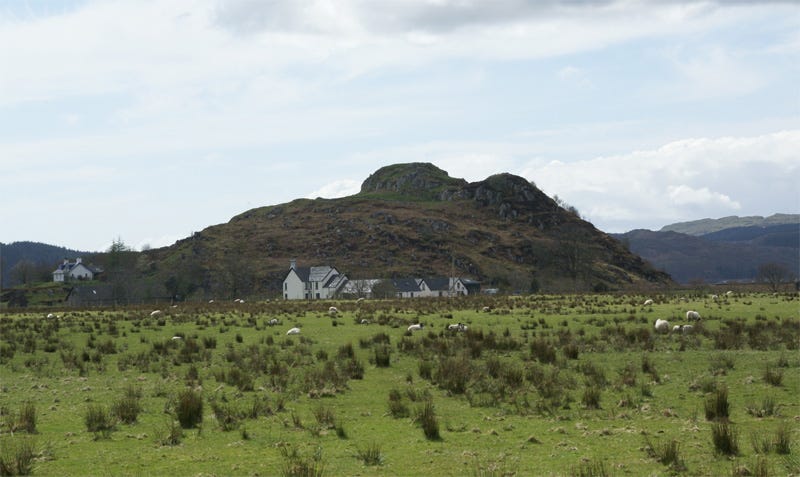About 50 kilometers south of Oban, on the west coast of Scotland, a low, rocky hill rises in a series of natural terraces. Not a very high hill: only 54 m — and yet an important hill, in both history and my life.
In the early 80s, both my husband and myself were graduate students at a university with a Scottish Studies department. We were not members of this department, but we were both interested in history, and the course Early Scottish History was offered in the evenings through Continuing Education. We signed up. The lecturer was a Scot, Ted Cowan, newly moved to Canada to teach in this department, and a born storyteller.
One of the many stories he told was of Dunadd, the stronghold of the kings of Dál Riata, with the boar and the footprint carved into the rock. How the man who would be king had to place his foot in that print, up under the sky on the hilltop, his lands below.
In 1986, we’d saved enough money for a delayed honeymoon, and we were both defending our theses in October. A holiday beforehand seemed like a good idea. So we found a charter flight (remember those?) to Scotland and flew for the first time as a couple across the Atlantic, landing at Prestwick in the early morning. The first few days we spent visiting relations, and then we were free.
Dunadd must have been one of the first places we went: I no longer remember. I remember parking, and climbing up the path past the white house at the base on a partly sunny and windy day. I remember the rolling fields below us, and the river. We looked at the carved boar, and the footprint, and I placed my foot in that petrosomatoglyph* (and in 1986, I think it might still have been the real one, and not the replica that is there now) and a shock of ‘what did I just do?’ ran through me.
And at that moment, although I could not have defined it at the time, landscape and history and legend and story became something more than the sum of their parts. Ted’s stories weren’t just entertaining tales; they were rooted in this land, this hill, and these carved symbols that had been here for fifteen hundred years or longer. A kingdom that had risen, and flourished, and fallen, but was not forgotten, its marks still on the land, its traces still in blood and language and memory.
From that moment on the summit of Dunadd to the world of my books there is a line. Not a straight one: my fictional world has many influences, but what I write about, at its heart, is the intersection of landscape and history and story, and the way language and memory and place hold people — and those themes moved from abstract to, at some visceral level, understood, on that September morning nearly forty-five years past. And although it’s never come up in my books, I rather think that the Teannasacha of Linrathe, the chosen chieftains of the land north of the Wall, are acknowledged in their authority on a hill with a carved boar and a footprint in the rock, the sky above them and their land spread out below.
*petrosomatoglyph is the posh name for any body part carved into stone.
Image: By Otter — Own work, CC BY-SA 3.0, https://commons.wikimedia.org/w/index.php?curid=4492330
Originally published at
https://ofhistoryandkings.blogspot.com
.


